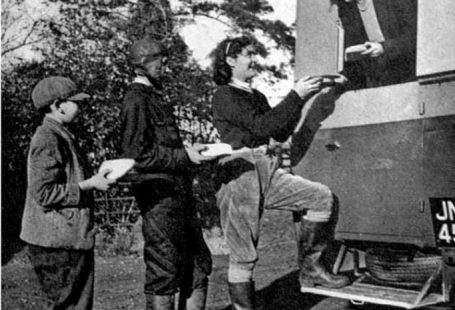At the beginning of September 1936 the Nottingham Evening Post describes ‘an invasion’ taking place in Kent. But this wasn’t an invasion of a military kind. It was in fact an invasion of hop-pickers, arriving in the county for the hop-picking season.
The annual trek of 40,000 hop-pickers to the green fields of Kent has begun, with an invasion of caravans, horse drawn lorries, cars, covered wagons, perambulators and even London taxis. Our photo shows hop-pickers at work at Paddock Wood.
Nottingham Evening Post | 1 September 1936
In this special blog post we use photographs, illustrations and articles to understand this fascinating phenomenon, in which urban families came to the countryside for three weeks in order to bring the hop harvest home.
Before mechanisation hop-picking was a hugely labour intensive process. Consequently, farmers needed extra workers. This help came in the form of families, usually women and children from London, who would arrive in Kent for three weeks in September to pick hops. Many saw it as a kind of holiday, a chance to exchange city life for the green fields of the countryside.
Illustrated Sporting & Dramatic News | 17 September 1943
A September 1943 article in the Illustrated Sporting and Dramatic News makes the hop-picking working holiday seem something of an idyll:
Hop-picking is always regarded as a sociable out-of-door occupation combined with the pleasures of a lengthy and enjoyable picnic. Fine weather is an important factor both for the grower and the helpers, but, all being well, we may see the usual crowds of healthy, sunburnt Londoners returning from their season’s work.
Illustrated Sporting & Dramatic News | 17 September 1943
However, it was not always so. Hop-picking gained immense popularity in the Victorian era, and by the 1870s railway companies provided ‘Hop-Picker Specials’ to transport workers into Kent. But conditions were poor, with limited sanitation and shelter, and disease was often rife.
An artist’s impression in the Illustrated London News, 11 September 1897, highlights the plight of hop-pickers in Kent, describing how: “The greatest distress lies in the fact the hops are scarce and pickers cannot find work; consequently, prices for picking are low, and there are an unusual number of would-be hop-pickers tramping about in search of employment.”
Illustrated London News | 11 September 1897
Reform soon followed, with hopper-huts providing shelter for workers. A description in the Illustrated Sporting & Dramatic News in 1941 suggests how far conditions improved:
Hop-picking was once carried out under primitive conditions, but vast improvements have been made during the last two or three years. Comfortable huts are provided for the workers, sanitation is good and a hot bath can be had for a charge of 2d. Special ration cards have been issued to the pickers, who register with the nearest shops, which, in some cases, are on the hop-fields themselves! In addition, the Ministry of Food is sending mobile canteens, and sufficient cigarettes and tobacco are available.
Illustrated Sporting & Dramatic News | 19 September 1941
By 1941 hop-pickers were not only vital for agricultural purposes, but also for the war effort. In 1941 80,000 workers were in Kent bringing home the harvest, and the majority of these workers were women. In the same article, it is described how mothers are able to leave their babies at a crèche whilst out picking.
Illustrated Sporting & Dramatic News | 19 September 1941
Hop-picking in wartime was not without its dangers, as in 1940 hop-pickers worked ‘steadily through the Battle of Britain. Some were actually under machine-gun fire and more than one German airman baled out over the hop-gardens while work was in progress.’
But after the end of the war, and in the early 1950s, the glory days of hop-picking were coming to an end. An article from September 1951 in the Illustrated Sporting & Dramatic News relates how:
Some of last year’s crop, for which there was a waiting market at home and overseas, was left to blow away because there was not the labour for picking. Fewer and fewer families spend a picking holiday in the hopfields, and families that still go, leave before picking is ended, because the children must be back at school and the mothers, who really do the work, must go back.
Mechanisation then became the reality for hop farmers. The Royal Show in 1951 saw the demonstration of a mobile hop-picker, designed by Mr E H Burr, himself a hop-grower. These machines were capable of picking 1,000 bushels a day and could do the work of 80 pickers.
Illustrated Sporting & Dramatic News | 5 September 1951
At the Guinness Hop Gardens in Bodiam three-quarters of a million hop plants were attended to by 100 men in 1953, but still required 4,000 hand-pickers and 3 machines to harvest.
Many will still remember the hop-picking holidays, which were a curious collision of country and urban life, a ritual for many London families in the nineteenth and twentieth centuries, which saw families and young children work together to bring the harvest home. The Archive provides us with a fascinating record of this – both the sun-blushed September days and the harder days of tramping through the inhospitable countryside to find work.












